I’m of the opinion that nature photographers should occasionally test the limits of their gear and their skills. For me, attempting to photograph this hawk in flight in these conditions did just that.
1/2000, f/7.1, ISO 500, Canon 7D, 500 f/4, not baited, set up or called in
I found this wet and bedraggled juvenile Red-tailed Hawk nine days ago at a very snowy Farmington Bay. They often assume this droopy-winged pose when they’re trying to dry out their feathers. We can’t see most of the primaries of the left wing because they’re hidden by snow that has been wind-blasted against the east side of the post. If it looks like part of the bill is missing it’s because there’s a bit of snow stuck to the upper mandible. That snow stays in place throughout this entire sequence.
1/1600, f/7.1, ISO 500, Canon 7D, 500 f/4, 1.4 tc, not baited, set up or called in
Soon the bird flew to a nearby kestrel box but I was preoccupied with something else when it took off from here so I missed the opportunity.
1/16000, f/5.6, ISO 500, Canon 7D, 100-400 @ 400mm, not baited, set up or called in
It soon landed on another post near the road and I decided that even though it was a cloudy, mostly dreary morning I’d attempt flight shots at take-off. My flight shot keeper rate is poor in these lighting conditions because contrast tends to be so low that autofocus struggles to keep locked on to the bird. I switched lenses so I’d be less likely to clip anything and waited.
1/2000, f/5.6, ISO 500, Canon 7D, 100-400 @ 340mm, not baited, set up or called in
When it launched the hawk gave me a leaning take-off which I liked.
1/2000, f/5.6, ISO 500, Canon 7D, 100-400 @ 340mm, not baited, set up or called in
Then I got lucky. The bird stayed low enough that…
1/2000, f/5.6, ISO 500, Canon 7D, 100-400 @ 340mm, not baited, set up or called in
there was mostly snow directly behind the bird…
1/2000, f/5.6, ISO 500, Canon 7D, 100-400 @ 340mm, not baited, set up or called in, removed part of one small stem
the entire time. If it had flown a foot higher I’d have had vegetation behind the bird and I doubt that my autofocus (and/or my skills) could have kept focus locked onto the hawk. As it was I was able to get six sharp shots in flight after the bird lifted off.
That said, any images in this light will have muted colors and contrast that won’t appeal to everyone. I could significantly increase both color saturation and contrast in post-processing but to my eye doing so produces images that don’t look natural given the conditions so I don’t do it.
Just my way of doing things…
Ron


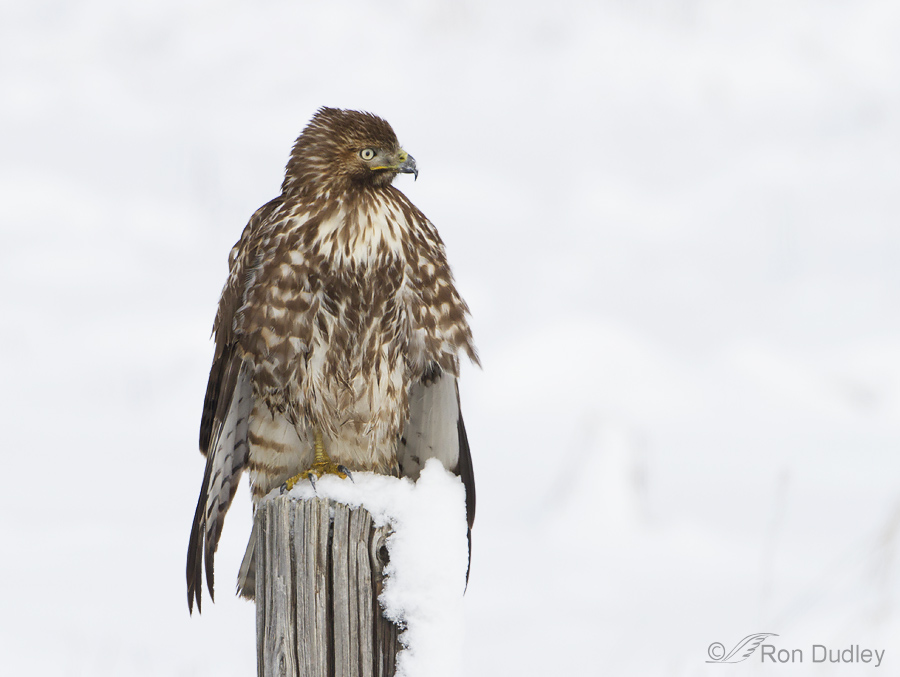
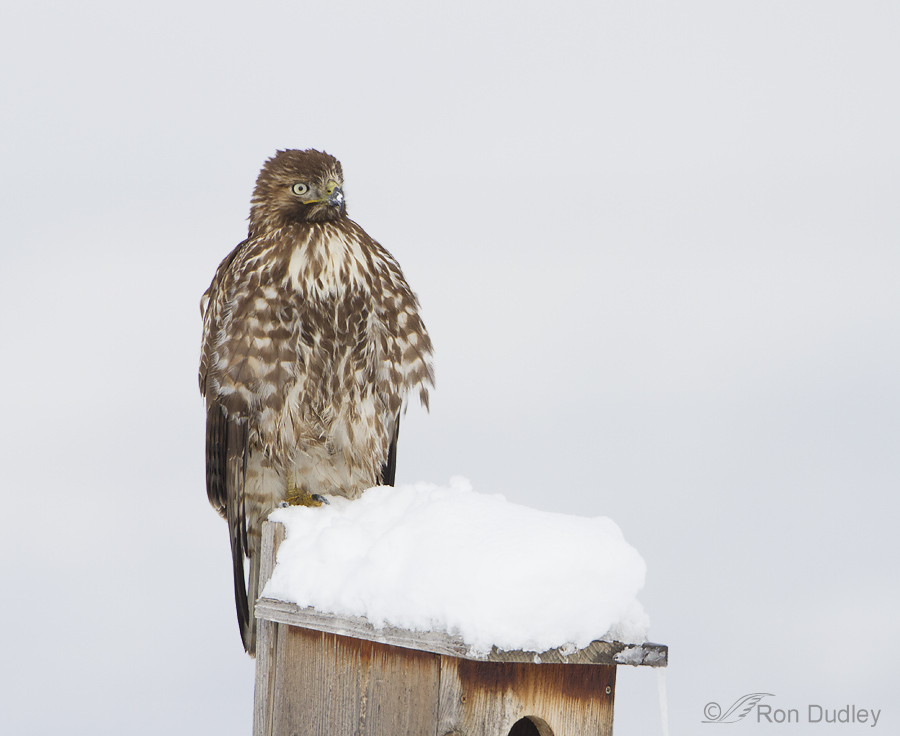
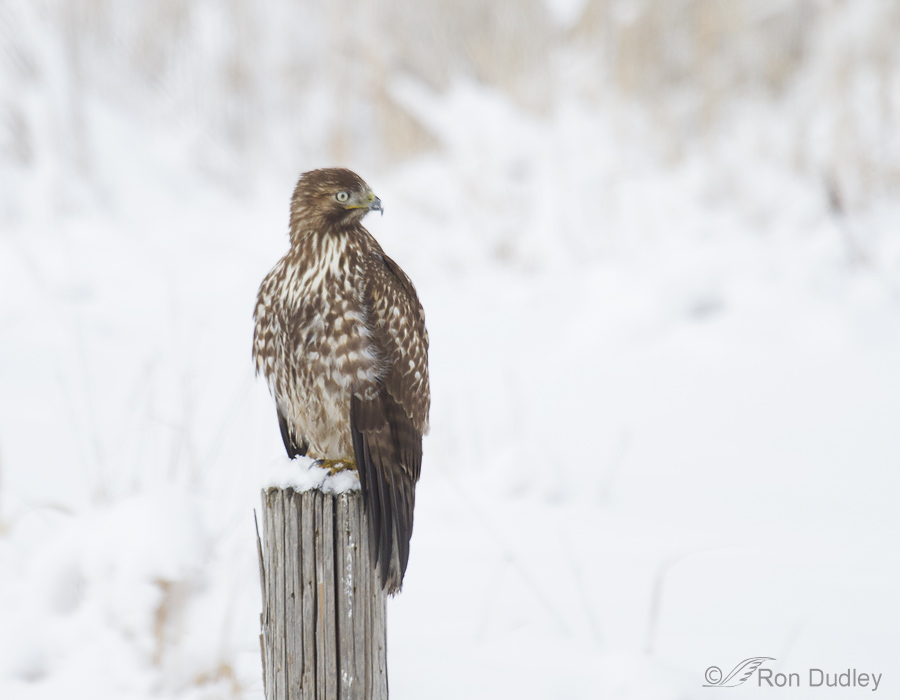
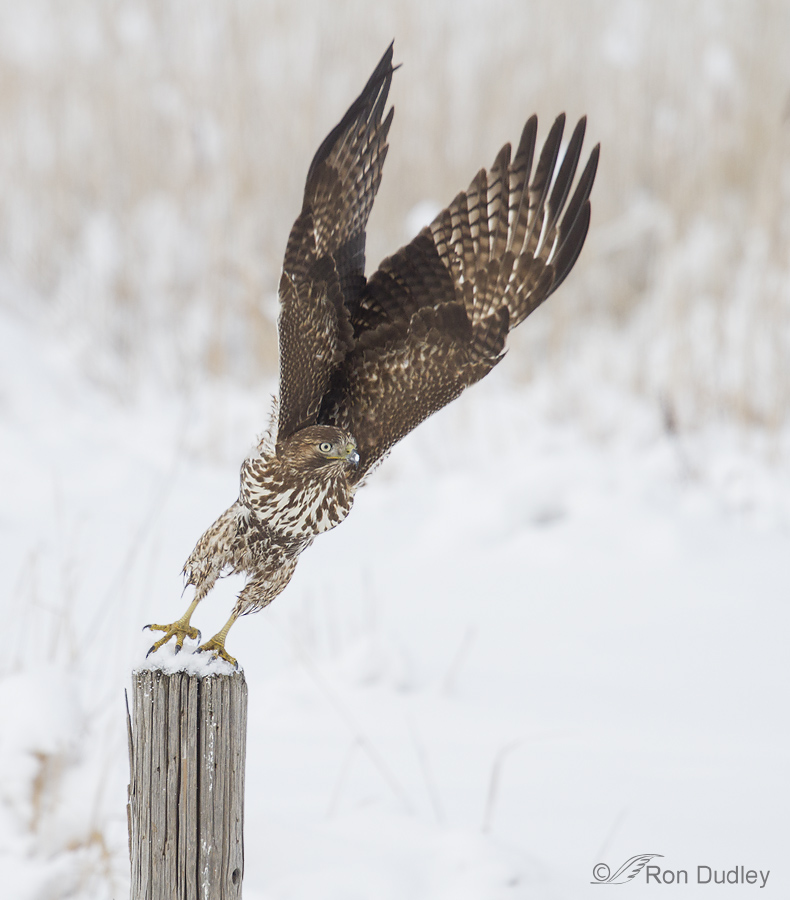
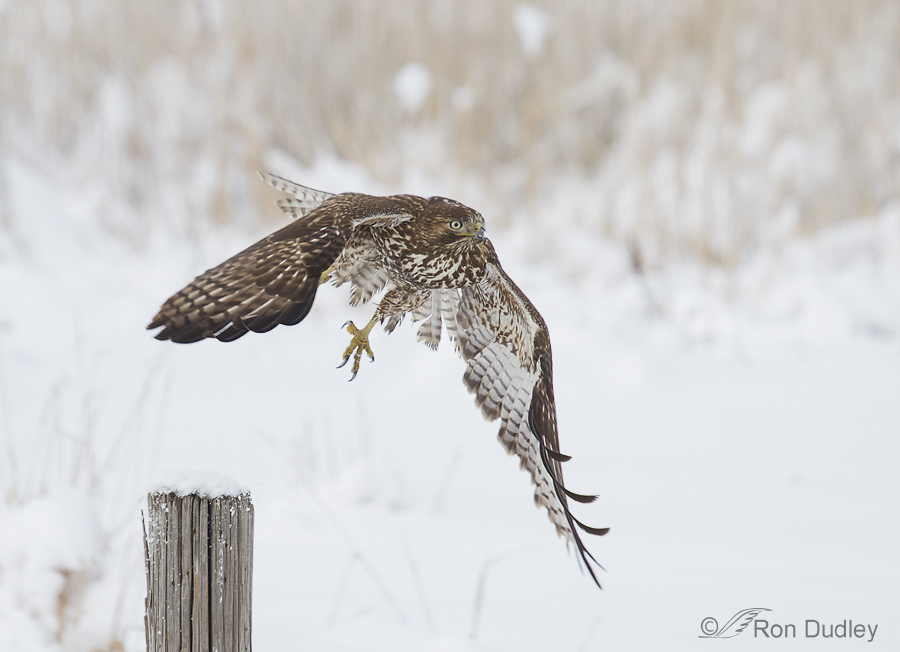
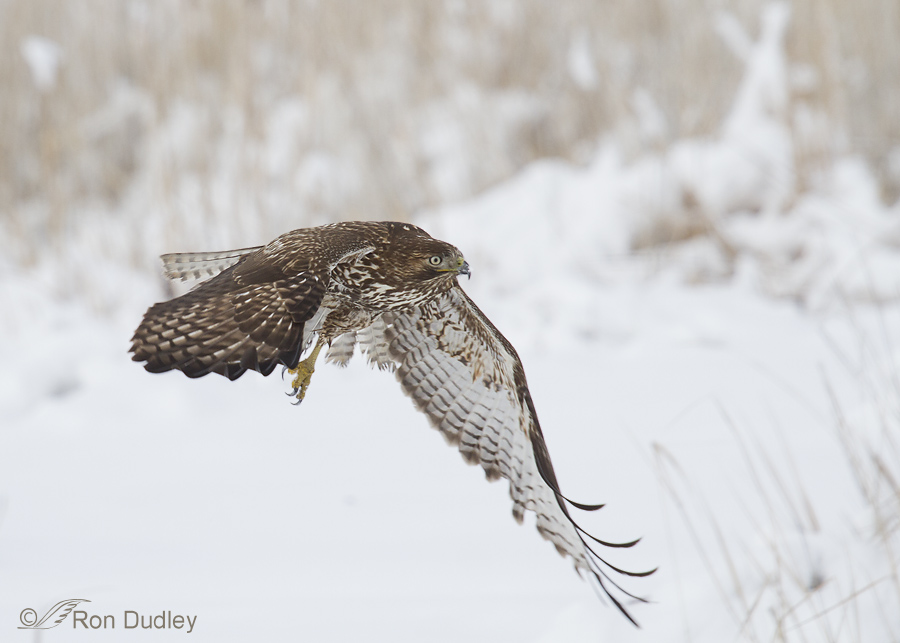
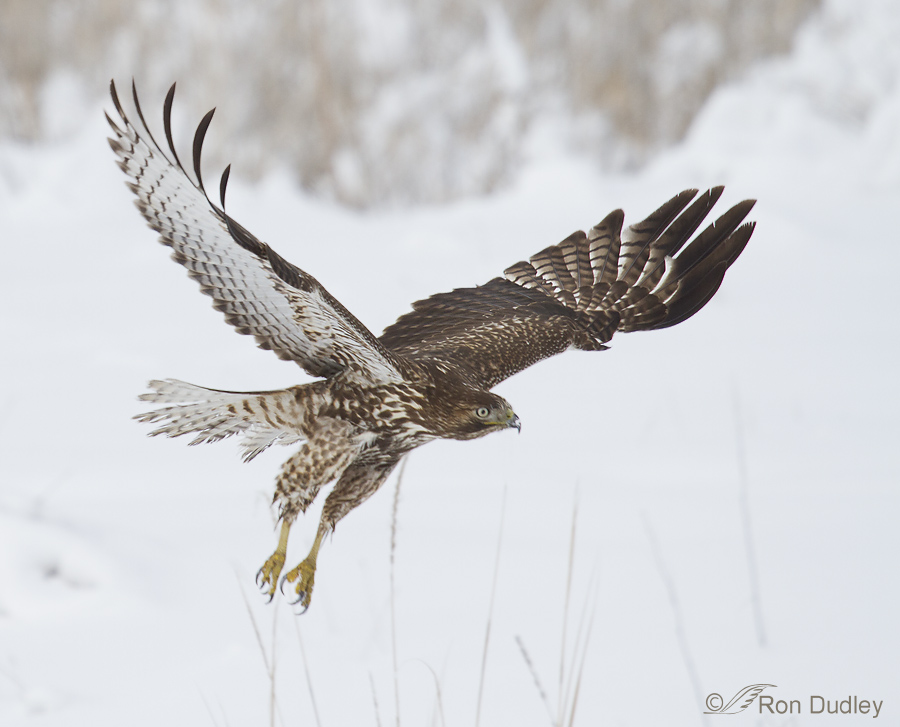
Hi Sir. I came across your photo’s… The Redtail sequence is smashing good. Thank you…. birds of prey!!!!!
You did good! A wonderful series of shots and interesting decisions re. lens, settings, etc. I have one lens (300mm 2.8) and 3 tc. The 1.4x gives the sharpest result, but auto focus in many settings is zing-zing, zing-zing, in and out. I lose lots of shots and am often tempted to hurl the whole shebang. With the 2x, auto focus is far better, but the often low light and a noisy camera (D800) requires a lot of compromising noise reduction in post processing. Bravo for taking on these difficult conditions and overcoming them handily! Beautiful work.
Hey! Take it easy on that nest box youngster! Lol. Great shots Ron. I always enjoy reading through your thought process and techs. Thank you for the ongoing tutorials.
I figured you might take some ownership in that box, Mike – and several others in the area.
That is a terrific launch shot.
Beautiful!!
Beautiful sequence Ron.
A beautiful collection. Snow does tend to simplify the background. Not sure which is my favourite!
Ron, I am such a sucker for snow shots … probably because I never get enough snow or snow photo ops! These are truly beautiful and it would be tough for me to pick a favorite. I actually like shot #1 because of the wing position and the way the snow clump blends into the background. It gives the photo this lovely fluidity. It always makes me smile, too, when raptors are perched with outstretched, drying wings or in other unusual poses. (Are you changing lenses in the car? You must have that system down.)
Thanks, Ingrid. I have two lenses attached to two 7D’s so I actually don’t have to swap out gear.
Thank you, everyone. It seems the 4th shot is the consensus favorite and I concur
Great take-off sequence under most difficult conditions – well done.
You wrote: “I’m of the opinion that nature photographers should occasionally test the limits of their gear and their skills.”
Seems like I’m always doing that, but not this successfully.
Oh. And oh again.
What an incredible sequence. Power, movement, vitality AND beauty. And that snow on its beak was very sticky wasn’t it?
You should be proud. I hope you are proud.
And I am very, very happy. Thank you.
Wonderful series! With the height of the wing lift in the 4th frame, that must have been a powerful lift stroke following…amazing you could get they next image.
Absolutely beautiful! I especially like the slanted lift-off. All the shots are excellent, but that take off is definitely my favorite.
That takeoff shot is really spectacular! I’d say your skills are more than up to the challenge….
Good sharp bird with the 100-400! Congrats!
That take off shot is just incredible. Totally worth waiting for that one!!! Amazing flight shots with a mostly snowy background. You ‘rock’ Ron!!! All my shots of my typical yard birds have background vegiatation to dela with. So I can totally relate to how difficult getting your shots must have been. Bravo!!!